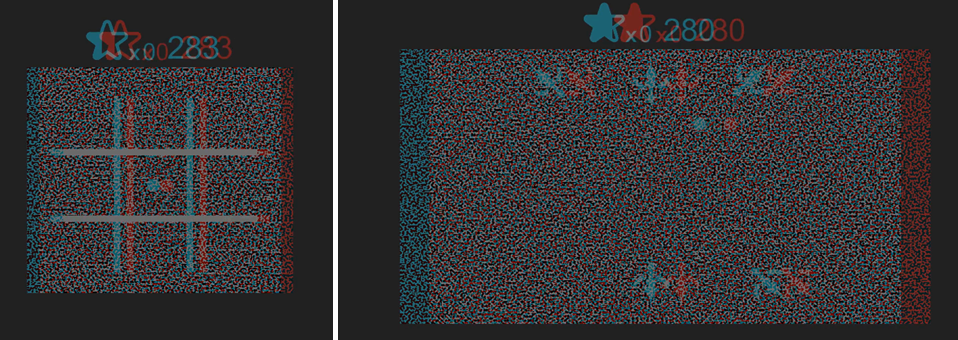Vision Therapy Based on Computer Gaming
Overview
iCare is a video gaming system designed to provide vision therapy for children with non-strabismic amblyopia or convergence insufficiency (CI). The system uses video games to present vision therapy exercises intended to improve visual acuity in patients with amblyopia and positive fusional vergence in patients with CI. The iCare software uses a webcam to track special red-cyan anaglyph glasses that are worn by the patient. This enables the system to know the patient’s distance from the screen and provide a consistent visual challenge level during therapy game play. Patient assessment and approval by the medical professional is required prior to use.
Software Description
Amblyopia therapy mini-games all require recognition and discrimination of appropriately colored and sized optotypes to be successful in the activities. The target optotypes are colored red so they are seen through the red lens of the anaglyph glasses (over the amblyopic eye) and masked (suppressed) by the cyan lens (over the non-amblyopic eye). Software automatically sizes the presented optotypes based on the distance of the player from the screen. Thus, if the player gets closer (farther) from the screen, the optotypes become smaller (larger) based on this distance.

Examples of Amblyopia Therapy Mini-games – Invaders and Concentration
CI therapy mini-games require that a player exercise positive fusional vergence at varying demand levels to view dynamically-generated anaglyph random dot stereogram (RDS) images containing hidden forms. CI mini-games support three vergence training modes. In Sliding mode, vergence demand is steadily increased to a maximum value, and then held constant for the duration of the mini-game. In Tromboning mode, vergence demand oscillates up/down between the minimum value and maximum value in incremental steps. In Jumping mode, vergence demand alternates between two values. The images below from two of the CI therapy mini-games are viewable using standard red-cyan anaglyph glasses.

Examples of CI Therapy Mini-games – Tic Tac Toe and Dragon Feeder
Therapy Workflow
After a vision therapist configures the software appropriately for the patient’s diagnosis, a patient will typically use the system 5 days a week for 12 weeks. Each daily session starts with an exercise called Excalibrate, in which the patient’s current visual performance is assessed. The results of this exercise are used to set the challenge level in vision therapy mini-games that follow. Four mini-games, each 5 minutes long, are performed each session. There are 10 available mini-games for each therapy mode (amblyopia and CI), including matching exercises, character recognition, memory games, and arcade-style games. As a reward for completing the mini-games, the player is given play time to explore iCare’s open world regions. Compliance and performance in the mini-games translates into rewards and advancement in the open world.
Clinical Trial
The iCare program includes a multi-site randomized controlled trial (RCT) sponsored by the NIH National Eye Institute involving 10 optometry/vision therapy practices around the U.S. and recruitment of approximately 100 children ages 4 to 18. Patient participation consists of a 12-week home-based intervention with pre- and post-examinations to assess change in vision status. The study in ongoing and is expected to be completed by Summer 2020.
